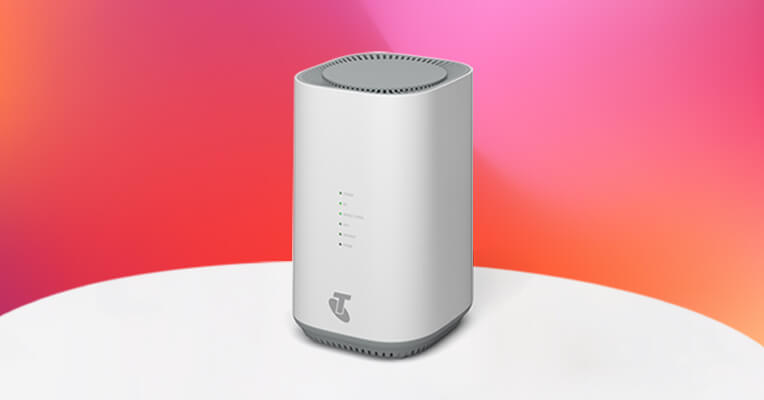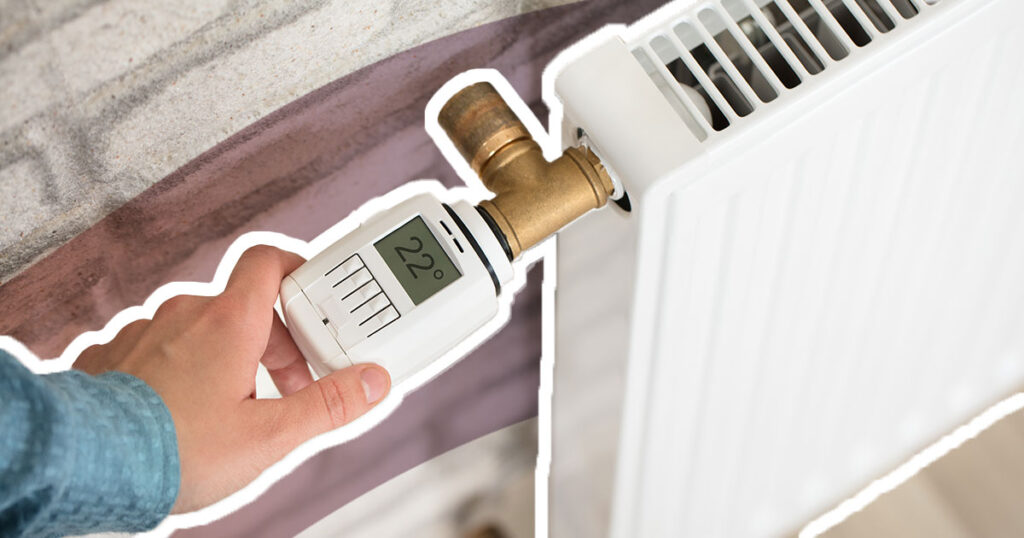Get rid of one more cable when it comes to turning your home into a wire-free WiFi zone.
What is Home Wireless Broadband?
Broadband internet has come a long way. Cable internet was once all the rage, but ADSL and its successor ADSL2+ was more ubiquitous. Then along came the NBN. But while the NBN is the current dominant form of broadband internet in Australia, there’s a growing list of viable NBN alternatives.
Mobile broadband is one of these alternatives, whether via dedicated plan or tethering a big-data plan. Similarly, Elon Musk is making waves with speedy satellite contender Starlink. And finally, you can simplify a lot of your at-home ’net needs by considering a home wireless broadband plan.
What is Home Wireless Broadband?

Home wireless broadband is effectively a fancy way of using mobile data in a more shareable way in your home. While you can use smartphone tethering to share your phone data by activating ‘hot spot’ mode, Home Wireless Broadband connects to the same mobile phone tower your phone would, except it’s via a modem-router that then shares the internet connection with the devices in your home.

Home Wireless Broadband plans
At the time of writing, we had a more than a dozen home wireless broadband plans in our comparison engine. They range in price from $49.99 per month for the TPG Home Wireless Broadband 16Mbps plan and stretch up to $93 a month for Spintel's 5G Unlimited Wireless Broadband plan.
We have a separate page for the best home wireless broadband plans, but below is a full list of home wireless broadband plans sorted by price from our comparison engine.
Speeds to expect with Home Wireless Broadband
The speed you can expect from Home Wireless Broadband plans depends on whether you choose a 4G or 5G plan. Either way, your speed will be dependent on your 4G or 5G coverage, your proximity to the tower, network congestion and any obstructions in the way of the signal.
It's also worth mentioning that many plans are speed capped. For example, TPG's Home Wireless Broadband plan is capped at 20Mbps, and its 5G Home Wireless Broadband Plus plan is capped at 50Mbps.
However, there are uncapped plans out there. Telstra's 5G Home Internet plan advertises evening speeds of around 291Mbps, but our testing has hit speeds of up to 700Mbps.
If you’re curious about your internet speed, our speed test below works for NBN, mobile and Home Wireless Broadband connections.
What about 5G Home Wireless Broadband?
While 5G isn't available to everyone in Australia, providers are growing their 5G footprint. Telstra's 5G network now covers around 87% of the population. This is an exciting proposition for those looking for a speedy NBN alternative.
The caveat here is that 5G mobile coverage in your area doesn't automatically mean you can sign up for a 5G home wireless broadband plan. For example, Telstra reportedly limits the number of 5G internet plans available in a single postcode to avoid network congestion. Still, with blazing fast speeds and many plans priced below equivalent NBN plans, it's worth checking availability to see if your address is covered. Below you'll find a list of 5G home wireless broadband plans.
Modems you can use with Home Wireless
Most of the Home Wireless Broadband plans in our comparison engine come with a compatible modem-router, with Spintel the only BYO exception (though Spintel does offer a modem rental option). TPG offers a $0 Home Wireless Smart Modem Gateway, which is yours to keep if you stay connected for 24 months or you can return it if you leave before then. This is the same device offered on iiNet and Internode Home Wireless Broadband plans.
Vodafone offers the Vodafone Wi-Fi Hub 3.0 for its 4G Home Wireless Broadband plans, which has a $0 fee if you stay connected for 36 months. It offers the same deal for the 5G modem included with its 5G home broadband plans. The Optus Home Wireless Broadband plans come with the Optus Ultra WiFi modem (4G or 5G, depending on the plan), which also costs $0 if you stay connected for 36 months. Telstra, meanwhile, only requires you to stay connected for 24 months for its $0 5G home broadband modem.
Should you want to change providers before those terms are up, most providers will only ask you return your modem within a certain timeframe to avoid being charged a fee.
Home wireless broadband vs mobile broadband
If you’re thinking this Home Wireless Broadband schtick sounds a lot like mobile broadband, well, you’re half right. Both technologies do rely on mobile data. But while mobile broadband plans are built to be used while you’re out and about, Home Wireless Broadband is intended as an alternative for home internet.
The speeds may be comparable, but the big difference is the amount of data you get per month. For mobile broadband, data starts at as little as 1.5GB and stretches up to 400GB. For Home Wireless Broadband, all the plans in our database include unlimited data (albeit at capped speeds in most cases).
The other difference is that, like signing up for an NBN plan, Home Wireless Broadband plans typically require you to enter your address to confirm that you have adequate reception from the respective phone network to practically use the service.
Here's a quick look at some of the most cheap mobile broadband plans available for comparison.
Home Wireless Broadband vs NBN
In terms of speed and reliability, 4G Home Wireless Broadband is closer to NBN Fixed Wireless and NBN satellite than the NBN technologies used in metro areas. For download speeds, 4G Home Wireless Broadband can technically reach NBN 100 speeds but its best-case scenario is closer to NBN 50.
5G Home Wireless Broadband, however, is more comparable to NBN speeds, and in many cases outshines the NBN. As we mentioned before, our testing of Telstra's 5G Home Internet saw speeds of up to 700Mbps. If you live in an area with good 5G coverage, it's worth considering 5G Home Wireless Broadband as a viable NBN alternative.
Related Articles




